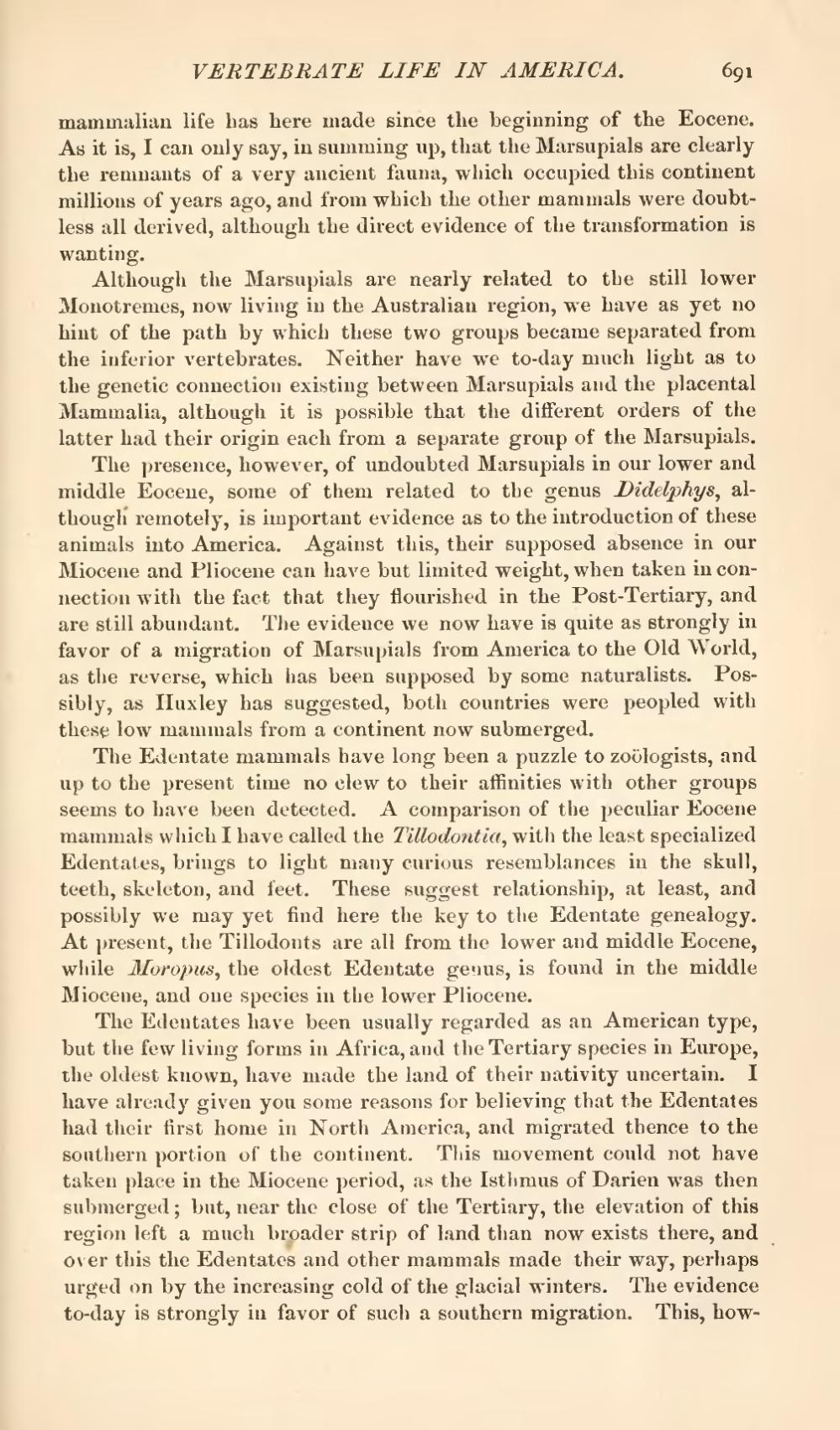mammalian life has here made since the beginning of the Eocene. As it is, I can only say, in summing up, that the Marsupials are clearly the remnants of a very ancient fauna, which occupied this continent millions of years ago, and from which the other mammals were doubtless all derived, although the direct evidence of the transformation is wanting.
Although the Marsupials are nearly related to the still lower Monotremes, now living in the Australian region, we have as yet no hint of the path by which these two groups became separated from the inferior vertebrates. Neither have we to-day much light as to the genetic connection existing between Marsupials and the placental Mammalia, although it is possible that the different orders of the latter had their origin each from a separate group of the Marsupials.
The presence, however, of undoubted Marsupials in our lower and middle Eocene, some of them related to the genus Didelphys, although remotely, is important evidence as to the introduction of these animals into America. Against this, their supposed absence in our Miocene and Pliocene can have but limited weight, when taken in connection with the fact that they flourished in the Post-Tertiary, and are still abundant. The evidence we now have is quite as strongly in favor of a migration of Marsupials from America to the Old World, as the reverse, which has been supposed by some naturalists. Possibly, as Huxley has suggested, both countries were peopled with these low mammals from a continent now submerged.
The Edentate mammals have long been a puzzle to zoölogists, and up to the present time no clew to their affinities with other groups seems to have been detected. A comparison of the peculiar Eocene mammals which I have called the Tillodontia, with the least specialized Edentates, brings to light many curious resemblances in the skull, teeth, skeleton, and feet. These suggest relationship, at least, and possibly we may yet find here the key to the Edentate genealogy. At present, the Tillodonts are all from the lower and middle Eocene, while Moropus, the oldest Edentate genus, is found in the middle Miocene, and one species in the lower Pliocene.
The Edentates have been usually regarded as an American type, but the few living forms in Africa, and the Tertiary species in Europe, the oldest known, have made the land of their nativity uncertain. I have already given you some reasons for believing that the Edentates had their first home in North America, and migrated thence to the southern portion of the continent. This movement could not have taken place in the Miocene period, as the Isthmus of Darien was then submerged; but, near the close of the Tertiary, the elevation of this region left a much broader strip of land than now exists there, and Over this the Edentates and other mammals made their way, perhaps urged on by the increasing cold of the glacial winters. The evidence to-day is strongly in favor of such a southern migration. This, how-
